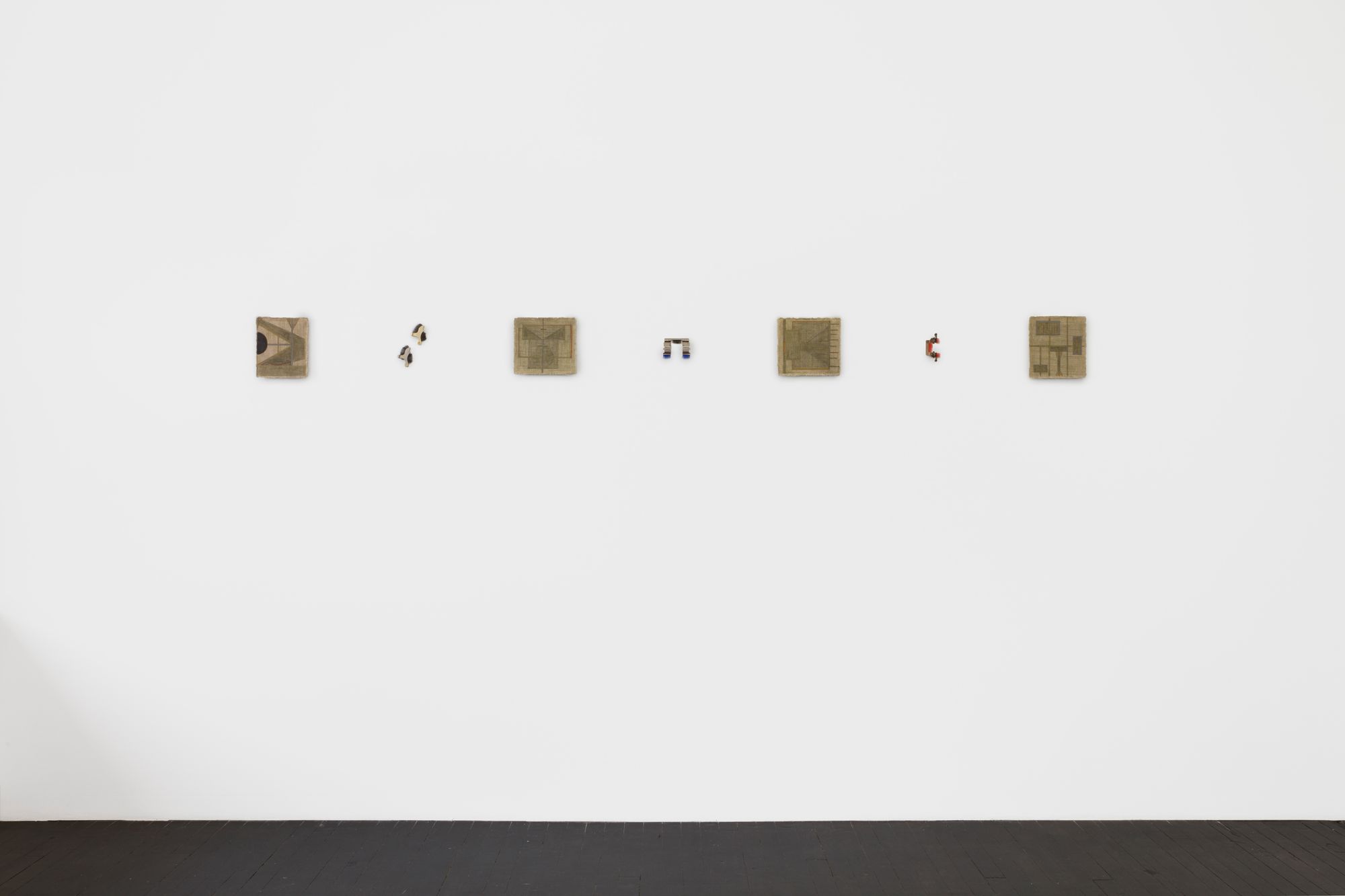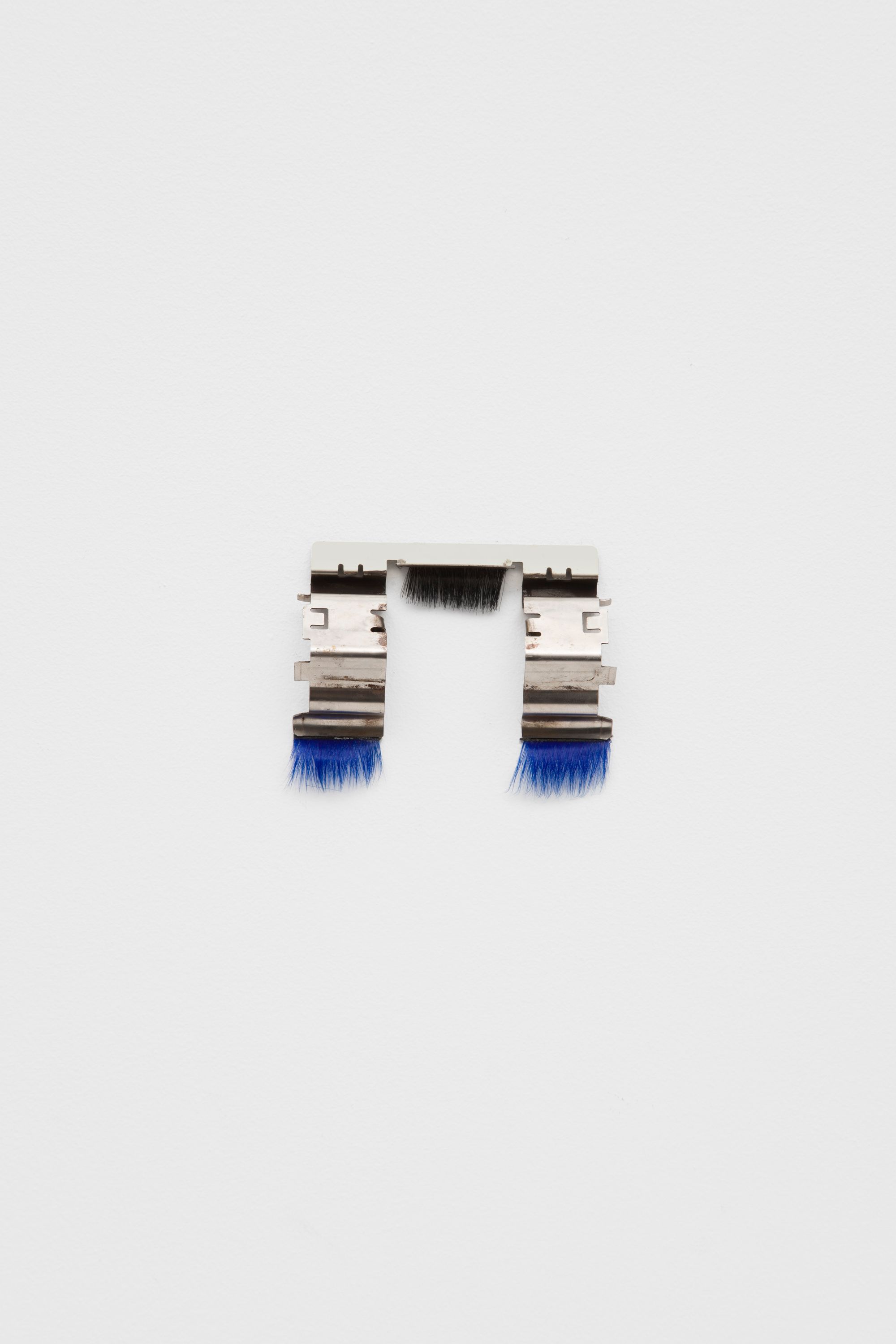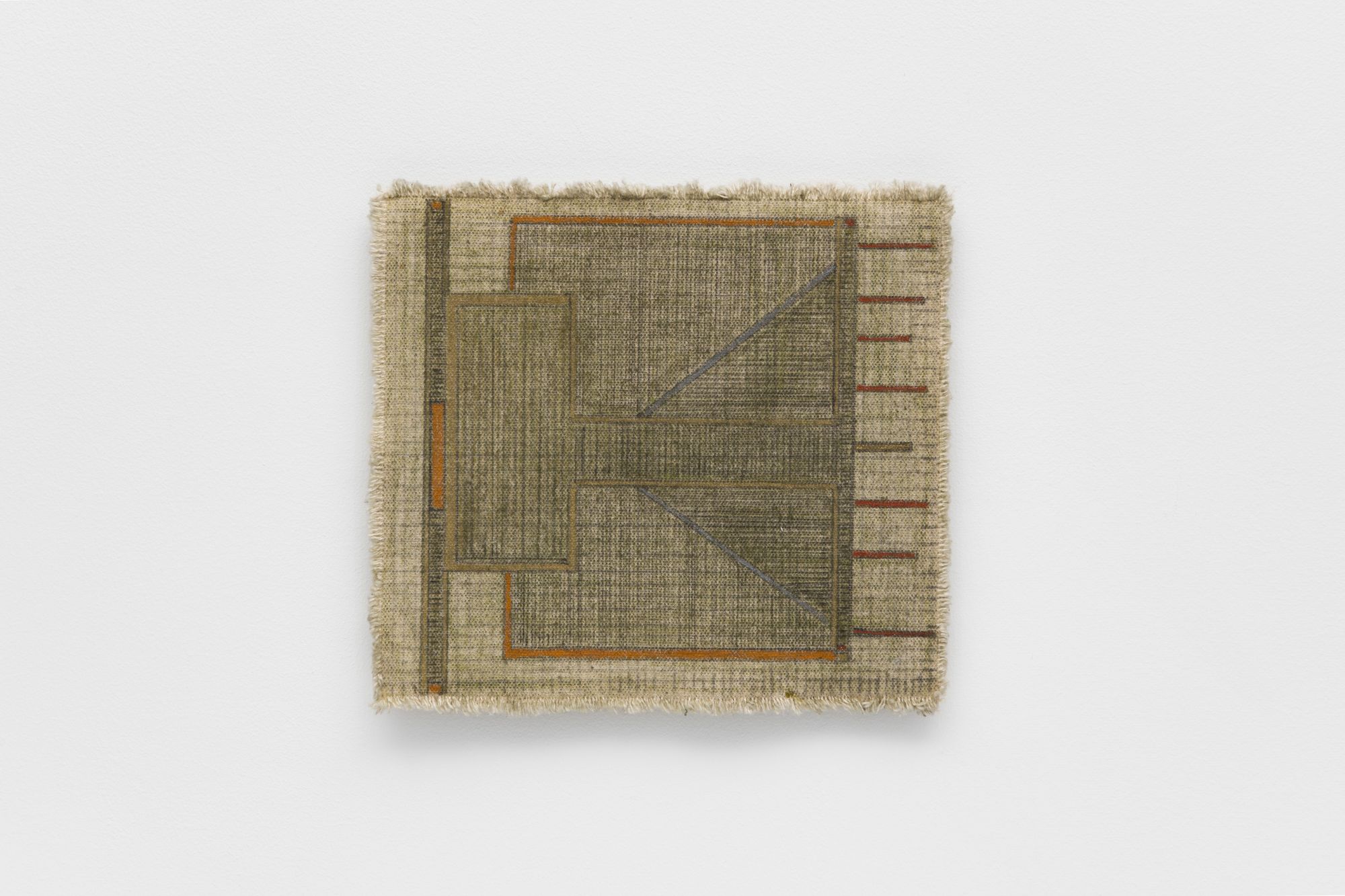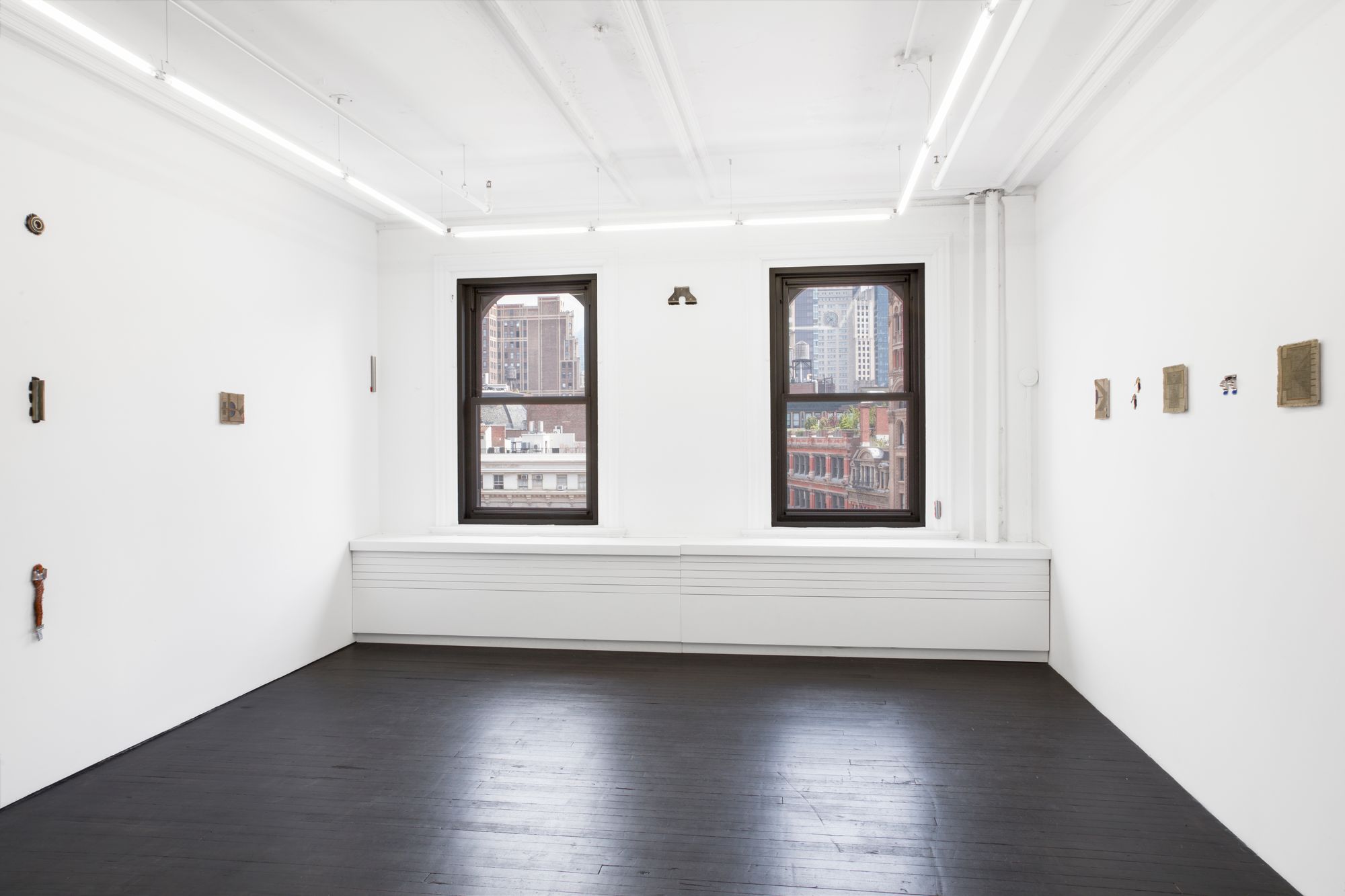
Past
Deondre Davis
Driftglass
Apr. 28–June 30, 2024
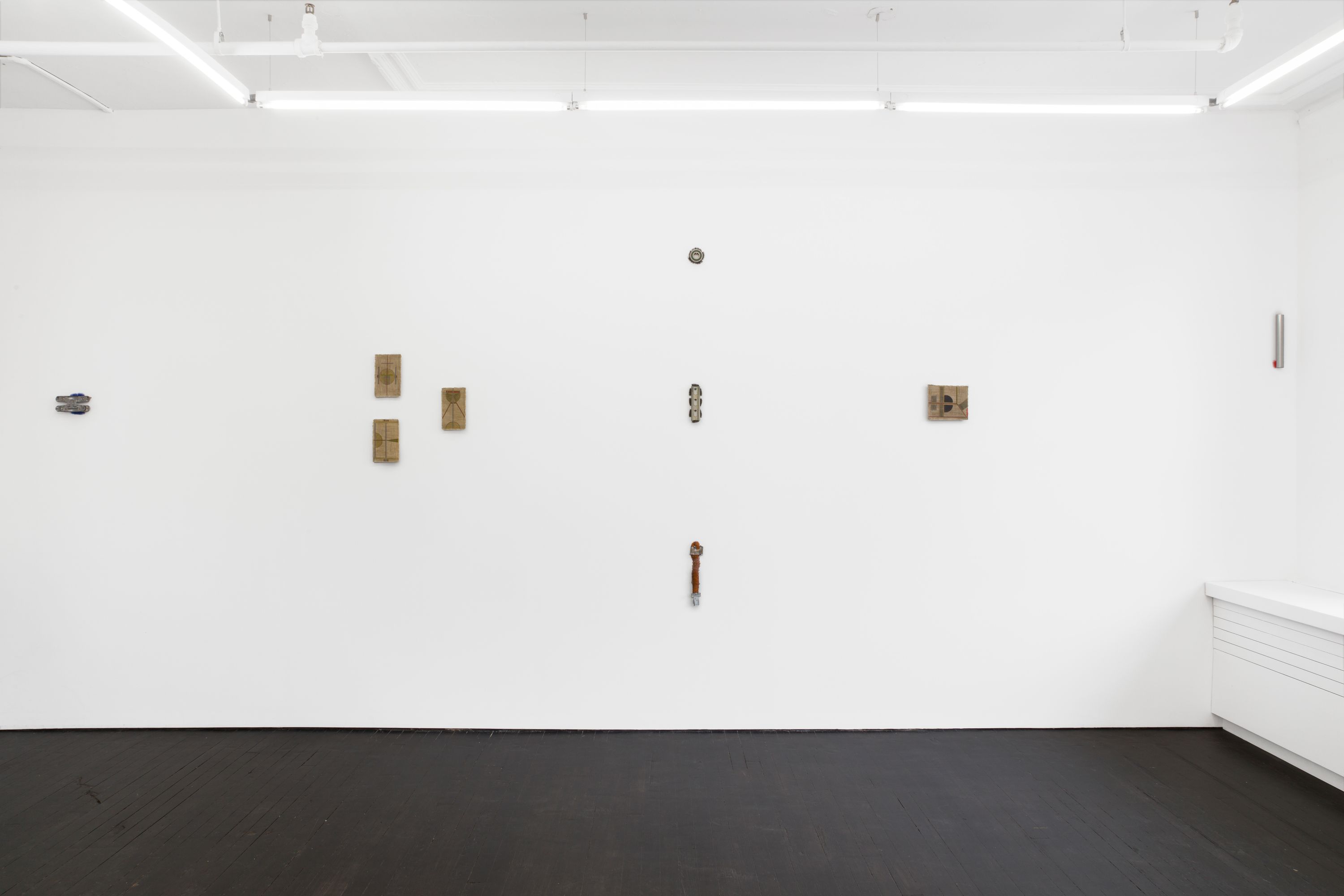
Gordon Robichaux is honored to introduce Driftglass, an exhibition of new work by Los Angeles-based artist Deondre Davis. For his debut at the gallery, the artist will present a series of modestly scaled paintings and a group of hybrid objects created with metal hardware, copper wire, and artificial eyelashes. The exhibition is titled after Samuel R. Delany’s book of science fiction short stories written between 1966 and 1971. A queer, African American writer, Delany is celebrated for his radical reinvention of the science fiction genre through his fearless explorations of race, class, sexuality, and gender (1).
Each of the paintings on view is made with a panel of unstretched canvas no larger than 8 x 8 inches. In the intimate space of his bedroom, Davis begins each work through a contemplative and methodical process. He cuts a small piece of canvas into a rectangle or square, draws a grid across the surface, and applies a layer of graphite, which he gently rubs with an eraser to create a soft patina. The edges of the fabric are left unfinished such that the warp and weft of the canvas fray, quietly calling attention to the work’s haptic qualities.
Davis builds his compositions with geometric shapes—semicircles, triangles, rectangles, and lines—drawn onto the underlying grid. He fills these forms carefully with warm, earthy colors—olive, burnt and raw sienna, bronze, natural grey, ash yellow, burnt umber, and ivory black—applied with colored pencil, gouache, and oil paint. The interlocking geometries evoke architectural plans, schematic maps of circuitry and machinery, and pathways of movement and exchange whose significance and scale remain ambiguous. Each of the paintings asserts its own internal logic while suggesting its connection to a larger system and experience.
Throughout the gallery, Davis has also installed a group of objects on the walls—mounted in a corner, up near the ceiling, and alongside a pipe—which engage with the room’s architectural features. These sculptures are made with fragments of hardware, including sections of aluminum pipe, metal door hinges, and copper wire that the artist collects. Upon close inspection, the sculptures reveal their relationship not only to the built environment but also to the human body: Davis has embellished their hard edges with linear sections of feathery, artificial eyelashes.
Davis further expands the context for the works by naming the paintings after the evocative titles of Delany’s science fiction stories: Aye, and Gomorrah; We, in Some Strange Power’s Employ, Move on a Rigorous Line; Cage of Brass; and Time Considered as a Helix of Semi-Precious Stones. Similarly, the sculptures are titled after the neutered space travelers, Frealks, and genetically modified amphibious workers who make up the characters of these stories (2).
For Delany and Davis, art is a liberating force with which to imagine and create new structures, pathways, and worlds beyond the constraints of existing social, linguistic, and spatial systems. Davis’s engagement with the interplay between forms, colors, textures, objects, and literary references conveys what he refers to as “the interchangeable aspects of subjective experience—of identity, memory, and the relationships between beings.”
1. Samuel R. Delany, Driftglass (New York: Penguin Classics, 2021), publisher’s description.
2. Ibid.
Install (8)






Driftglass was published in 1971 as a collection of ten science fiction short stories that originally appeared in the magazines Worlds of Tomorrow, The Magazine of Fantasy & Science Fiction, If, and New Worlds. Reflecting on the stories, Davis writes:
The book is a poignant metaphor for encountering the unknown and grappling with unfamiliar experiences, perspectives, and aspects of oneself.
In “The Star Pit” a young boy navigates life in a harsh future society and struggles to find his place in a world where individuals are judged based on their genetic background and physical abilities. “Dog in a Fisherman’s Net” is a story that follows a group of characters who live in a futuristic society characterized by social stratification and technological advancements.
Works

Nevyrazimov
Found object, epoxy, artificial eyelashes, screws
4 x 6.25 x 1.75 inches
2024

The Star Pit
Pencil, colored pencil, and gouache on canvas
5 x 8 inches
2024

Time Considered As a Helix of Semiprecious Stones
Pencil, colored pencil, and gouache on canvas
8 x 5 inches
2024
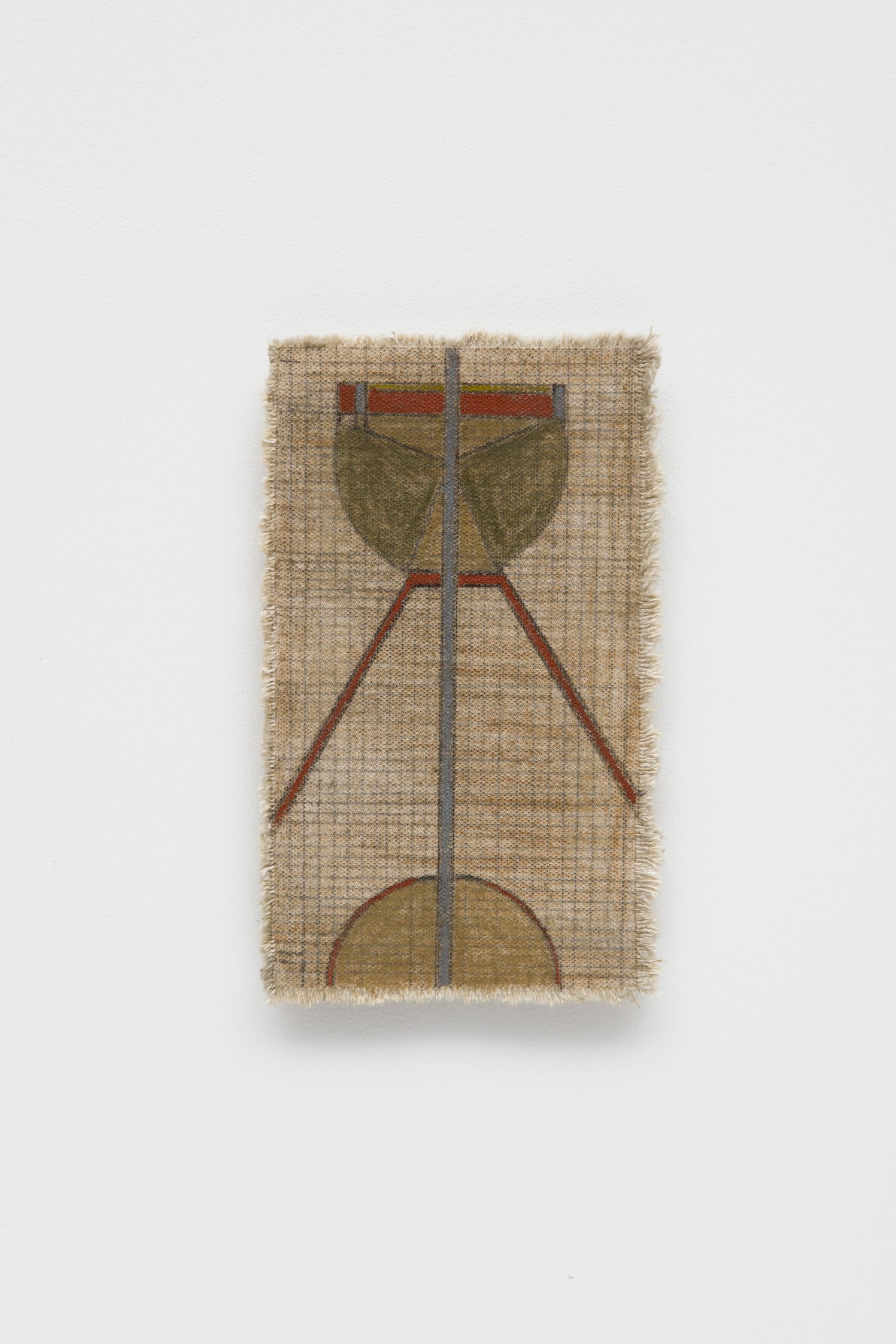
Dog in Fisherman's Net
Pencil, colored pencil, and gouache on canvas mounted to wood
8 x 4.5 inches
2024

Captain Quirn
Found object, epoxy, artificial eyelashes, nail
3.5 x 3.5 x 0.75 inches
2024

Althea
Found object, epoxy, artificial eyelashes, screws
7.5 x 2.5 x 0.75 inches

